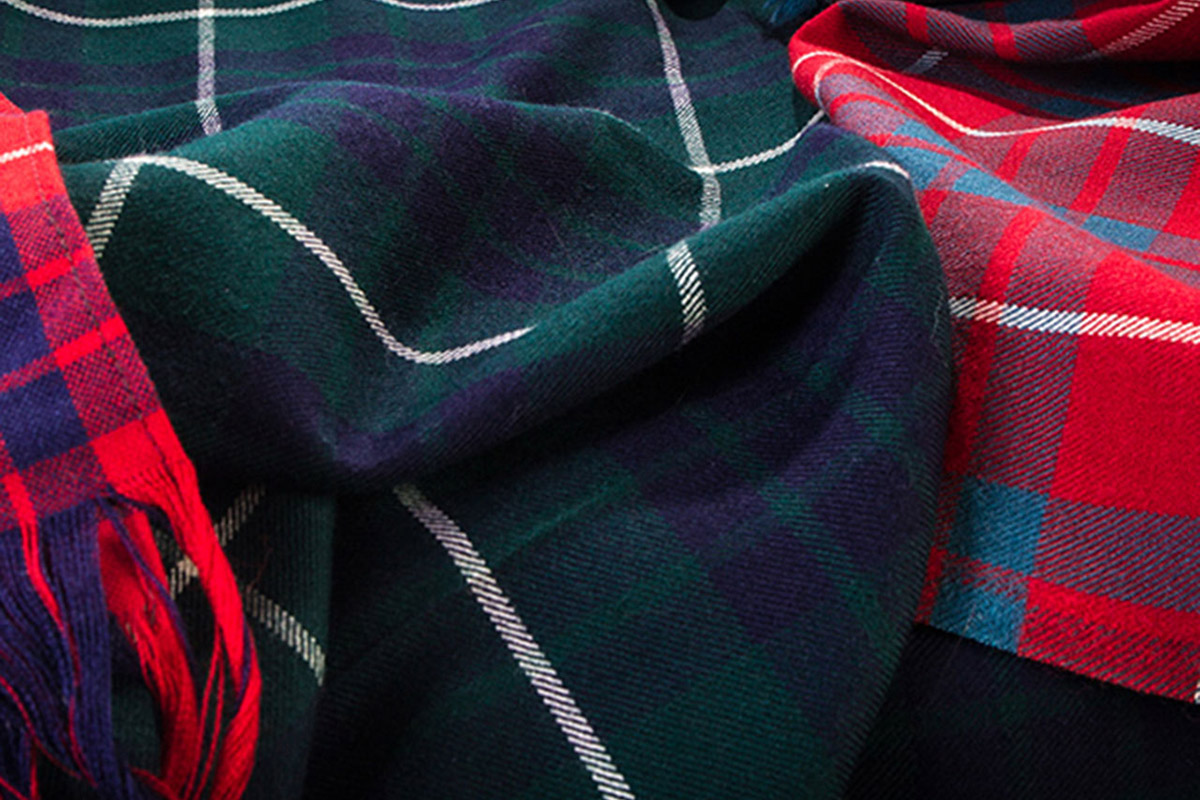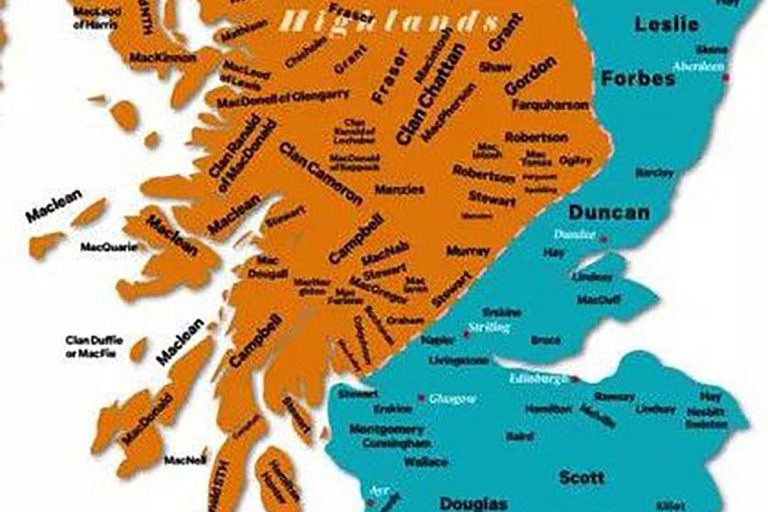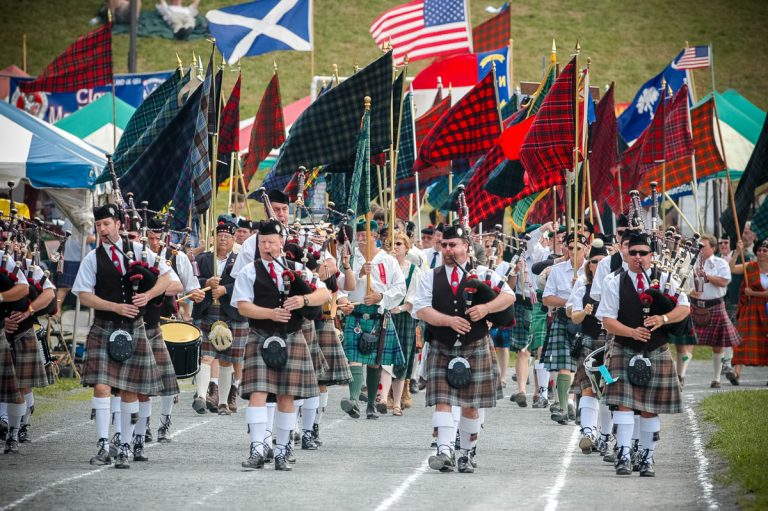The Origins of Tartan
There are two main schools of thought on the origins of tartans.
One view is that every Scottish family had a distinctive tartan pattern, the colors of which were obtained from the plants which grew only in their locality.
The opposing view states that kilts and tartan were an early 19th century invention that the Victorians developed into an enormous cult.
Somewhere between these two schools of thought lies the truth.
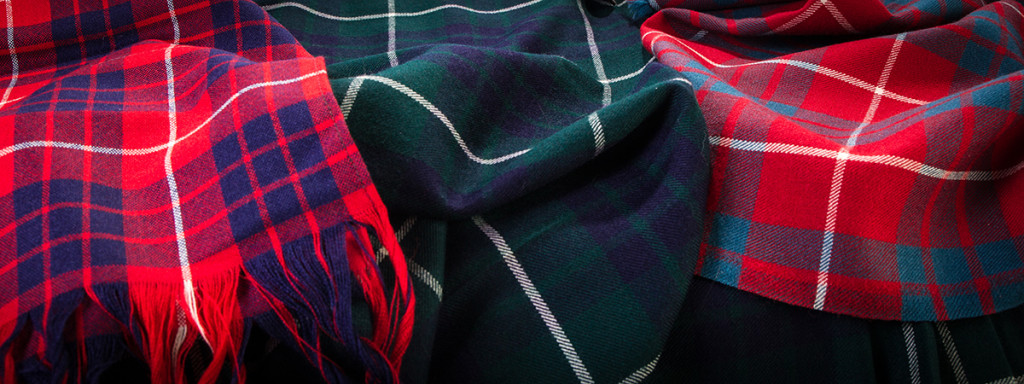
What is well recorded is that the Celts were noted for their exuberant sense of color. Roman observers referred to their striped, variegated, or chequered clothing and tattoos.
The simple two-color checks of two thousand years ago have evolved into a profusion of differing patterns that today number well over two thousand.
“Tartan” itself is a word originally imported from Europe. The Gaels used the term breacan, meaning “speckled” or “multi-colored”.
The word plaid is from the Gaelic word for blanket, being either a bedcover or a length of cloth perhaps 12 feet by 5 feet, which was swathed around the wearer and belted at the waist, hence the term belted plaid. The essentially white-based, patterned household blankets, which went with the early Scots settlers to North America, evoked an admiration for the pretty “plaid patterns” and in time “plaid” itself became a synonym for tartan and of arguably older origin.
Gaelic poetry and recorded observations, back to at least the 16th century, associate certain sets of tartan with specific families, but no more than a handful.
However, tartan was of sufficient importance by the time of the 1745 uprising that its aftermath saw a severely shaken government rush through an Act of Parliament in 1746 which banned the wearing of “tartan, kilt, and plaid” by all civilian men and boys other than landowners and… as it turned out, if you joined the British army.
History guide Bruce Fummey, reviews all of that in this video.
That act was not repealed until 1782, and in the ensuing period of restoration for Scotland’s shattered pride a series of cultural traditions were revived or invented that served to confuse the historical realities concerning what was to become the national dress for all Scotland.
Tartans and highland dress were not used in military regiments until the Scottish regiments themselves adopted standard-pattern uniforms.
A quaint Victorian custom saw the wearing of “dress” tartans after 6 pm.
It is an old highland tradition to encourage guests to wear tartan. For the wearer who has no tartan associated with his surname, there are options available:
- wear the tartan that is connected to your maternal or any other of your family lines,
- wear the set appropriate to the district from which your family comes or in which your surname was known,
- wear the Jacobite or Caledonian setts, or even the Government or Black Watch patterns if you are not pro-Stuart,
- wear whichever you prefer, but remember that when you sport a tartan you are proclaiming allegiance to that chief and his clan. Your loyalties may be tested!
- Wikipedia on the origins of tartans.
- Find your tartan at the House of Tartan.
- Did you know there’s a Tartan day every April?
